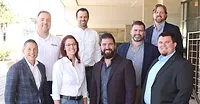Talking Tech: Roofing Contractors Discuss the Current and Future Impact of Technology in the Industry
Advancements in technology are sweeping change across all business sectors and industries around the globe, and roofing is not immune.
From the development of aerial imaging and storm-detection systems to the influx of mobile apps and Cloud computing, roofing contractors are finding a new wave of useful and non-traditional tools at their disposal. Roofing Contractor recently assembled some of the most innovative and enterprising minds in the industry to share how they are redefining the use of technology in the field, and finding unprecedented opportunities to help organize, manage and grow their businesses.
Their discussion — hosted initially at the 2014 Best of Success conference and recently revisited — covered a range of topics and explored the real and potential impact of these new tools on productivity, communication, efficiency and customer service. Here are the highlights:
Getting Smart
Few, if any, devices have revolutionized the access to information and technology like the advent of smartphones in virtually every business sector of the modern economy. In roofing, real-time communication, whether by voice, e-mail or text, has helped project managers, foremen and crews stay more efficient, and has also helped streamline the sales and product-ordering process, according to the RC panel members.
Proper smartphone use has also had a profound impact on customer relations, according to Ken Kelly, president of Kelly Roofing in Naples, Fla.
“Smartphones are absolutely critical. Customers expect immediate response and are starting to prefer digital forms of communication over calls because of their convenience,” Kelly said. “With the release of Windows 10, smartphones are full computers. Those who adopt early technologies have a distinct advantage over their competition.”
Ryan Dean, founder and president of Certitude Roofing, Siding and Windows in Malvern, Pa., likens smartphones to a hammer for an installer, especially when it comes to sales. Aside from instant voice communications from virtually anywhere, savvy salespeople can use smartphones to build a proposal with pictures and videos for the estimation process. Aerial measurement reports, calculating roof-pitch, FaceTime communications and easy access to schedules and customer information are just some of the other features that roofers can benefit from at a relatively low cost.
Dean said the potential of the powerful tech tool is virtually too great to measure, which makes it important for the roofing contractor to understand the optimal way and time to use them.
“You don’t use a bazooka when shooting at close range. Nor do you communicate with a customer in a text when they are in the same room as you. So selecting what tech tool to use for each particular situation is key to the success for the user,” he said.
Adam Olschewske, owner of Marshall Exteriors in Newark, N.Y., said his company integrated smartphones into its business operations roughly five years ago and, as expected, he uses them to communicate in real time with crews, quickly address customers’ questions and enhance the overall level of service. He’s also found some unexpected ways to help his company internally, particularly in training.
Using his iPhone, a tripod and microphones, he records his own training sessions for field work and sales staff that they can access anywhere, anytime on the company’s private YouTube channel. The ability for them to download and watch the training sessions at their convenience alleviates some of the pressure they feel to learn specific techniques or business practices quickly, and frees up Olschewske to move on to the next challenge.
“In the past, I’ve spent a lot of time on training and retraining people about how we do things, and with this process I can get away from that,” he explained. “I feel like my time is better spent taking on the next problem than doing the same thing for different employees again and again.”
Tabling Tablets?
Few topics sparked differences in opinion amongst the RC panelists than the effective use of tablets in roofing.
Dean said the ability to create custom contracts that customers can view, provide feedback and sign via tablets has revolutionized their business process. Time-consuming practices of printing, scanning and storing carbon copies are all but gone, and changes to work orders and product requests can all be kept up to date without extra trips to the jobsite or office.
“Closing the deal has never been so fast and easy for us,” Dean said. “Everything we need to finalize a sale is kept right on our iPads. All documents can be viewed, filled in and annotated with just a few taps. Filling out a form or contract is quick, and customers sign right on the screen.”
A secondary bonus of using tablets is the ease of storing those important records. Dean said his staff syncs all the important documents and data into the Cloud for web storage, meaning they can be accessed from anywhere at any time once they’re completed in the field.
Though valuable for product and service presentations to customers, Kelly said tablets have some shortcomings, particularly when compared to today’s powerful smartphones.
“Tablets are a gimmick and singular in purpose,” he said. “They are not truly portable, like a smartphone is, and they’re not fully productive, like a laptop would be.”
Programs and Apps
As powerful as these tech tools are, they’re only as good as the programs and apps that roofers install and use on them.
Dean said his company’s presentation app helps portray Certitude’s brand and message in a modern capacity, and keeps sales information up to date with all the necessary materials and attachments his staff needs in a digital pitch book. They can now present customers with whatever information they need, in any order, quickly and seamlessly.
“We found that this app creates a wow factor, an education factor, a differentiator and a sales tool like no other,” he said. “We use video testimonials, installation videos, a photo gallery, and all the products and color options which we can easily present even if you don’t have physical samples.”
Other programs the company uses include: Acculynx to manage customer information, production schedules, warranty details, service and scheduling; Google Calendar synched with Acculynx for employee schedules; Google Maps for making it to appointments and jobsites on time; and EagleView Technologies measurement reports.
Olschewske said programs like Keynote presentation software, Notability and even iMovie have helped tremendously in several aspects of his business. However, they’ve benefitted most from EagleView’s Pictometry Imagery. The pioneering aerial-imaging program has been a huge time and money saver on the front end of the quoting process, and can help prevent costly mistakes.
“We can cut at least an hour easily off of our quoting process by having the structure pre-measured by the time we walk in for the meeting,” he explained. “We also try to take the guesswork and judgement out of the picture because everyone’s judgement is different and defined by their level of experience in different scenarios.”
The “app explosion” of the past two or three years has provided many useful instruments for roofers, but Kelly warned contractors not to get too attached as a new wave of applications is coming and necessary.
“Apps are on the fading side of the bell curve,” Kelly said. “The idea of apps are to provide a singular purpose in an easy- to-use manner. With the majority of the population now adept to technology, more sophisticated applications are required.”
He said the next wave of apps will take the ease-of-use concept and embed much greater capability, connectivity and compatibility with other devices.
“Contractors are now seeking applications that can access their fully functioning internal software,” Kelly explained. “When on a phone, the layout is obviously much different as applications will need to be written to “respond” to the smaller form factor. But they will be able to access all of the full capabilities of the software, unlike today’s apps.”
Going Social
One of the more useful applications Olschewske has started using regularly from multiple mobile devices is the Facebook app. He said it’s helpful in both lead generation and brand awareness, but not necessarily in the traditional way. Though his company has had some success specifically targeting geographic areas and topic pages to draw new business with Facebook, the true benefit is starting to build brand recognition with clients who may not necessarily be customers today, but will remember Marshall in the future.
“It’s really about getting the company out there with positive interactions,” Olschewske explained. “The more I can interact with potential clients now, then in the future I’ll be top of mind when a need arises for them.”
Though he’s had success acquiring new business with paid programs that “boost” his posts in multiple markets, Olschewske said he’s learned that the quality of the posts also matter. Instead of just pictures or status updates, Olschewske said he purposely posts details about the projects, including challenges, and notable achievements, so readers get a first-hand sense of his professionalism and commitment to customers.
He said he’s also learned to take advantage of Facebook’s promotional attributes and leaves readers with a call to action so he can gauge the effectiveness.
Kelly said social media is more of a branding and social-engagement platform than an effective lead generator for roofing contractors.
“Those trying to use it to generate leads will be disappointed,” he said. “Sure, a few leads may come from it, yes, but that should not be the focus. The idea of social is to communicate with the community, promote company culture and share insights into the ‘why’ behind your brand.”
With so many platforms available at generally low cost, the key is to diversify the content and have a separate strategy for each social media venue.
“Don’t post the same thing to all sites. Think about the platform, why members are there and tailor posts in a way that provides valuable contribution to that platform’s users,” Kelly explained. “Don’t share business-related items on Facebook. Don’t get too touchy feely on LinkedIn. Do make fun, entertaining videos for YouTube. Do share photos of your completed projects on Porch or Houzz.”
Looking for a reprint of this article?
From high-res PDFs to custom plaques, order your copy today!








